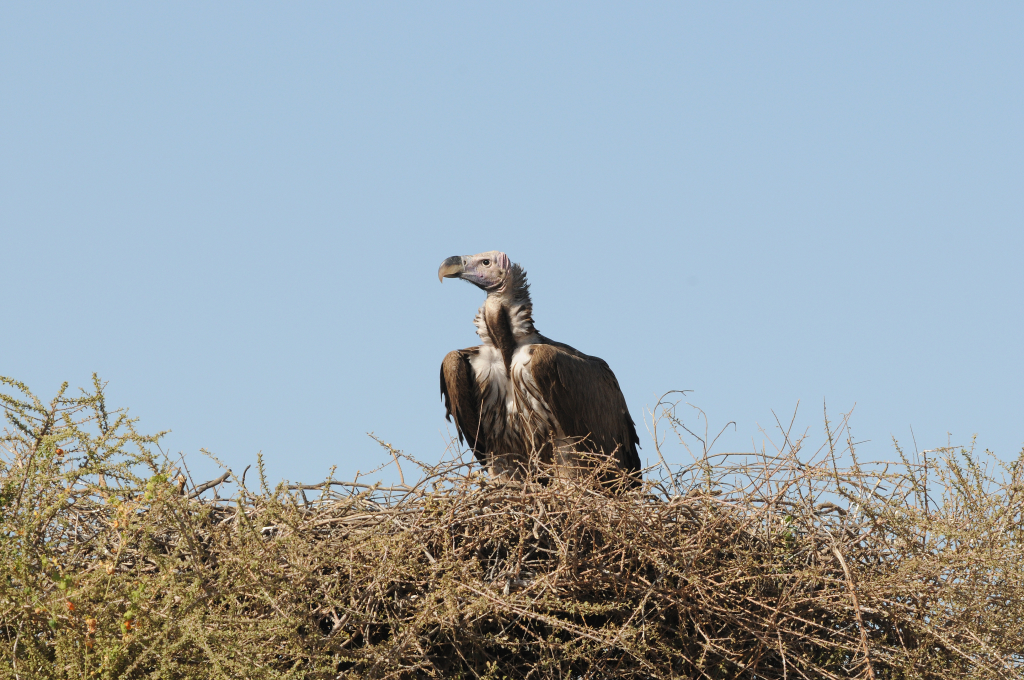
Action for vultures
Throughout Africa, vultures have declined drastically over the last decades, and while the Asian vulture crisis is widely recognized, a less known African vulture crisis is also occurring, with the highest rates of decline in West Africa.
What are we doing to halt the decline of vultures in West & Central Africa?
Sahara Conservation works on vultures in both Niger and Chad. We initiated a dedicated program based on regular monitoring of key vulture populations and on the implementation of adapted conservation measures to address the threats weighing on the species.
With this work, we actively participate in implementing the actions recommended in the multi-species action plan to conserve African-Eurasian vultures and in the West African Vulture Conservation Action Plan.

Since we started working on vultures in 2008, we have compiled one of the richest databases in Niger and Chad, greatly contributing to the development of knowledge and documentation on vulture populations in this understudied part of the world.
In Niger, monitoring was initiated in the Termit massif. Sahara Conservation now focuses on the Koutous Massif (monitoring of Egyptian vulture and Rüppell’s vultures populations) and on the Gadabeji Biosphere Reserve (GBR) (breeding pairs of white-headed and Rüppell’s vultures), where active nests are registered, and reproduction success assessed.
As part of a synergy with other projects led by Sahara Conservation in Chad in the Ouadi Rimé Ouadi Achim Faunal Reserve (OROAFR), opportunistic field information highlighted the importance of the reserve for Lappet-faced and Rüppell’s vulture populations.
In 2023, we began monitoring vulture nests using a standardized approach for this area and sites in Niger.


For the first time in the region, GPS tags were deployed in 2024 on six Rüppell’s and four lappet-faced vultures, offering invaluable data on their movements and ecology. This initiative will help us guide strategies to protect these vital species.


Beyond monitoring, we focused on assessing and addressing the main threats to vultures in the region to develop an adequate conservation strategy. Dedicated surveys enabled the collection of evidence on the illegal killing and trafficking of vultures for a belief-based in Niger. Since then, Sahara Conservation has been engaging with the main stakeholders to address the issue. Building capacity and support to the relevant authorities and raising awareness to increase engagement of local and surrounding communities where vultures occur to demonstrate the benefits of vulture conservation is also a key component of the work.
First mitigation activities showed positive results in designated regions as general awareness on vultures was improved, and the number of vulture parts found on sale significantly decreased in the country.

Sahara Conservation is dedicated to sharing capacities and filling the knowledge gap on these species in these remote parts of the world. By developing a regional and adapted approach, we aim to effectively contribute to their conservation in the short and longer term.
Our partners













